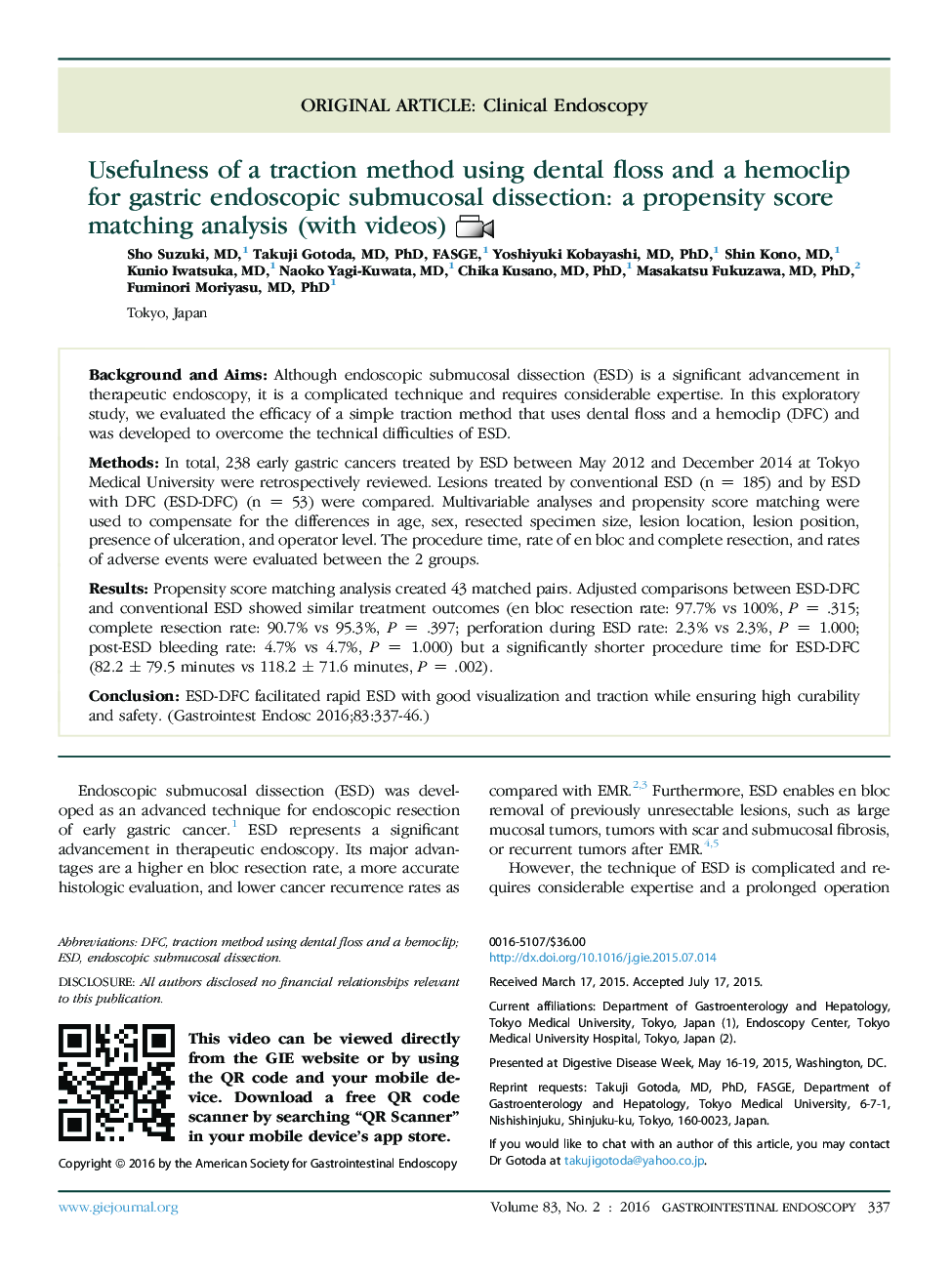| Article ID | Journal | Published Year | Pages | File Type |
|---|---|---|---|---|
| 3301930 | Gastrointestinal Endoscopy | 2016 | 10 Pages |
Background and AimsAlthough endoscopic submucosal dissection (ESD) is a significant advancement in therapeutic endoscopy, it is a complicated technique and requires considerable expertise. In this exploratory study, we evaluated the efficacy of a simple traction method that uses dental floss and a hemoclip (DFC) and was developed to overcome the technical difficulties of ESD.MethodsIn total, 238 early gastric cancers treated by ESD between May 2012 and December 2014 at Tokyo Medical University were retrospectively reviewed. Lesions treated by conventional ESD (n = 185) and by ESD with DFC (ESD-DFC) (n = 53) were compared. Multivariable analyses and propensity score matching were used to compensate for the differences in age, sex, resected specimen size, lesion location, lesion position, presence of ulceration, and operator level. The procedure time, rate of en bloc and complete resection, and rates of adverse events were evaluated between the 2 groups.ResultsPropensity score matching analysis created 43 matched pairs. Adjusted comparisons between ESD-DFC and conventional ESD showed similar treatment outcomes (en bloc resection rate: 97.7% vs 100%, P = .315; complete resection rate: 90.7% vs 95.3%, P = .397; perforation during ESD rate: 2.3% vs 2.3%, P = 1.000; post-ESD bleeding rate: 4.7% vs 4.7%, P = 1.000) but a significantly shorter procedure time for ESD-DFC (82.2 ± 79.5 minutes vs 118.2 ± 71.6 minutes, P = .002).ConclusionESD-DFC facilitated rapid ESD with good visualization and traction while ensuring high curability and safety.
